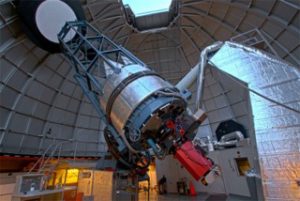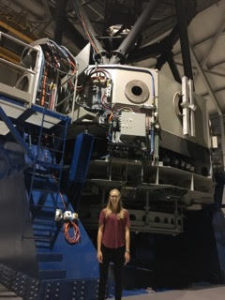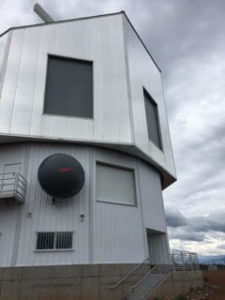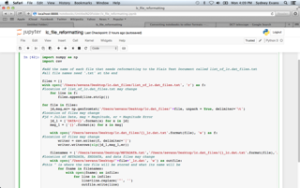What an incredible opportunity this internship has been! I have loved spending time at Lowell Observatory and learning about asteroids, distant stars, comets, exoplanets, history and research. I feel very fortunate to have been given the chance to work with Nick, the other interns, and the Public Outreach Program.
This past Tuesday, all of the interns who were part of the Research Experiences for Undergraduates (REU) program gave presentations on the work that they had been doing this past summer. Topics ranged from characterizing OB stars in the star-forming Lucke-Hodge 41 region, a search for activity in main-belt asteroids, and characterizing impact melt on Mercury. In true scientific fashion, the order in which the students presented was based on the distance their research objects were from the Sun. I enjoyed learning about the different research projects that the undergraduates were doing, while getting ideas about what type of research I may want to do in the future.
I also had the incredible experience of visiting the Discovery Channel Telescope on Friday! This three-story telescope is out in the Coconino National Forest on an old quarry site. While heading out there, Nick and I stopped at Anderson Mesa to visit the 1.8 meter Perkins telescope as well. It was very interesting to see the difference in the two telescopes and the developments of technology that were incorporated into DCT, but were not around in 1931 when the Perkins was built.
The DCT has a 4.3 meter mirror, which allows for images that are more focused, have a higher resolution, and are of objects that are farther away. This incredible mirror is cleaned on-site using a massive, custom built cleaner that is housed right next to the telescope. All of the reflective aluminum that is on the mirror is washed off and the mirror is loaded into the cleaner. Once there, a vacuum is created inside the chamber and it is heated up. The aluminum from the pre-coated pistons melts, and coats the mirror with a specific thickness of aluminum.
One of the most impressive things about the DCT was how forward thinking the project is. The Perkins telescope has been around for over 85 years and is still being used. When making the DCT, the engineers and astronomers had to plan for future technology and potential uses of the telescope, without knowing what they would be. There were three times as many spaces for instruments as there were actual instruments currently being used. The room where the terminals were housed was half empty for expansion. There were spare slots for cables and extra rooms for future detectors that needed to be climate controlled.
It was incredible to see how much potential the telescope had, even after seeing the fantastic types of data and results that it could already produce. The telescope can face one direction, a couple degrees off of the horizon, and move up and across the sky to the a couple degrees off of the horizon in the opposite direction in less than twenty seconds! That is no small feat for a telescope that massive. I felt so fortunate to have been able to visit it and was again awed by how much Nick knew.
On Monday, I finally wrapped up all of my work for Nick. I gave him my Python script, folders of results, and pages of notes for the next person to work on the project. It was surprisingly difficult to leave because there is still work to be done before the new database can be released. I really enjoyed working at Lowell this summer and want to give a huge thank you to my family, Pinhead, Lowell Observatory, Mary DeMuth, and Nick Moskovitz for making this internship not only possible, but absolutely amazing!





There are no comments published yet.